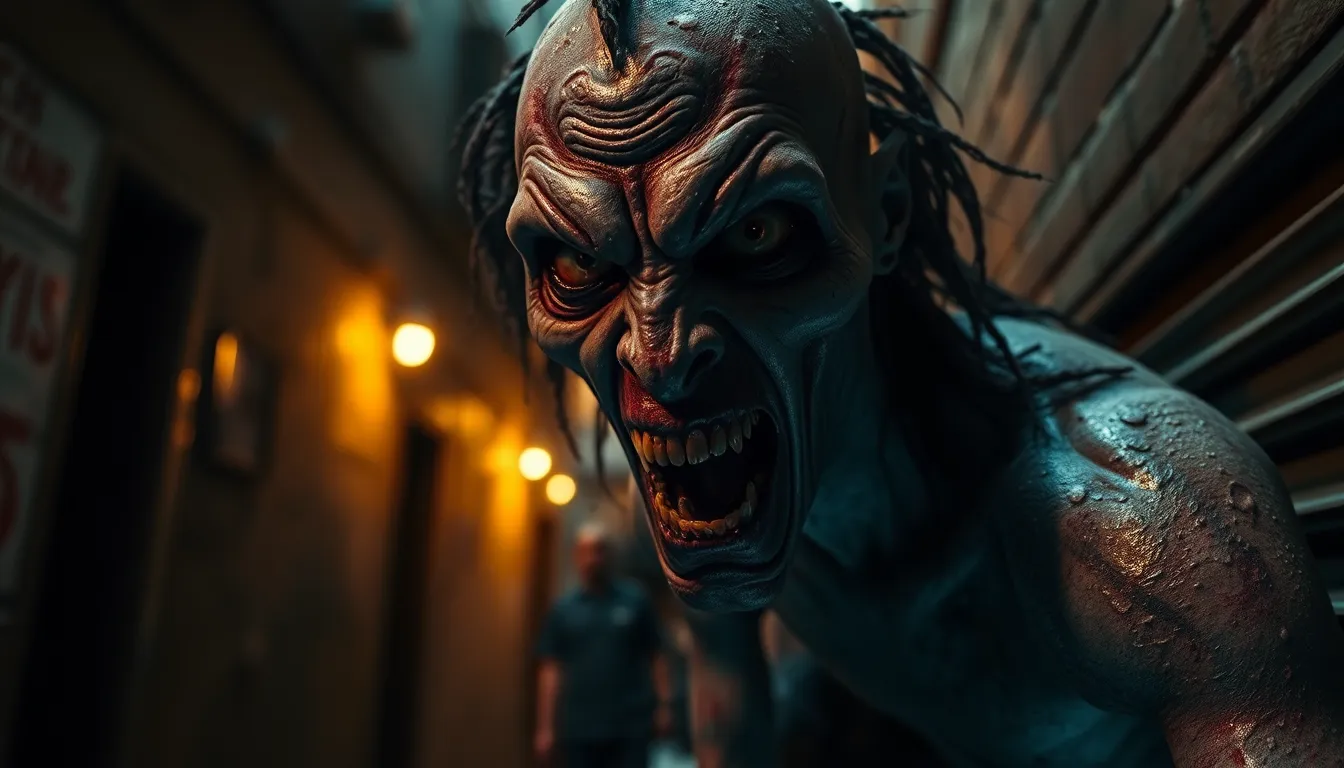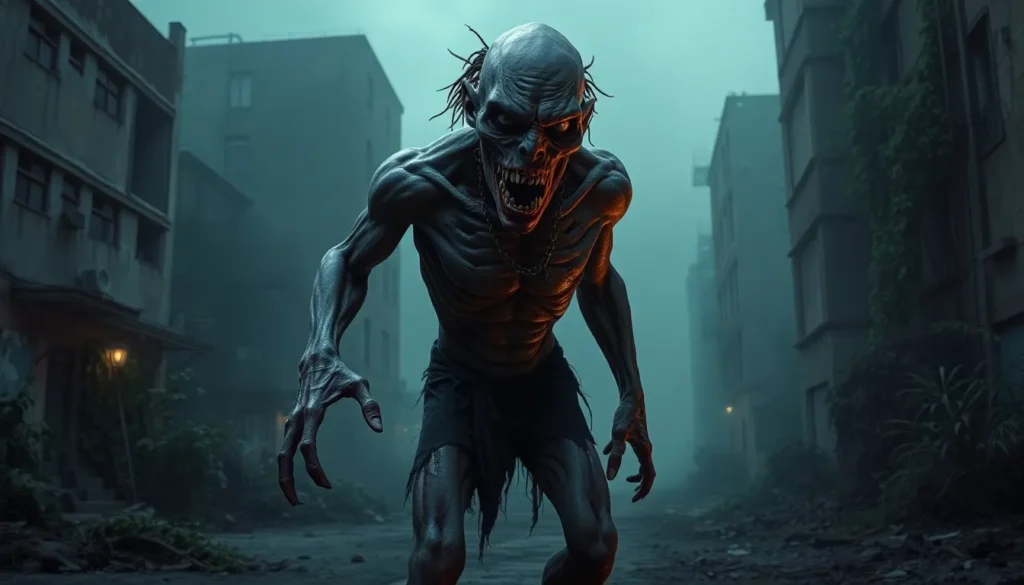In a world where the undead roam and survival hinges on quick thinking, the concept of the “alpha zombie” has sparked both intrigue and horror. This unique twist on the traditional zombie narrative explores the evolution of these creatures, particularly focusing on the implications of their physical attributes. One particularly shocking aspect that has emerged is the idea of the “alpha zombie penis,” a term that raises eyebrows and questions alike.
As society grapples with the aftermath of a catastrophic outbreak, the alpha zombie stands as a symbol of both power and grotesque transformation. This article dives into the fascinating yet unsettling elements of this phenomenon, examining how it challenges perceptions of mortality and humanity. Buckle up for a deep dive into the bizarre world of alpha zombies and the unexpected themes that arise from their existence.
Table of Contents
ToggleOverview of 28 Years Later Alpha Zombie Penis
The “28 Years Later Alpha Zombie Penis” concept emerges from the intersection of horror fiction and biological evolution. In this post-apocalyptic setting, alpha zombies exhibit enhanced physical features, including pronounced genitalia. These traits signify dominance within their grotesque hierarchy, showcasing a stark departure from traditional depictions of zombies.
Alpha zombies present a unique blend of strength and ferocity, becoming pivotal as both predators and leaders. Their exaggerated physical characteristics serve not only as symbols of power but also as markers of their transformation from human to monstrous entity. The alpha zombie penis concept reflects the raw, primal instincts driving these creatures in a world governed by survival.
The portrayal of alpha zombies transcends mere horror, inviting discussions about human nature and societal structures in dire circumstances. It challenges perceptions of masculinity and potency while exploring themes of virility amidst decay. This intricate juxtaposition emphasizes the complexities of existence in a world where humanity and monstrosity coalesce.
Through this lens, “28 Years Later Alpha Zombie Penis” delves into the visceral and the philosophical, pushing boundaries within the zombie narrative. The alpha zombie figures not only as a threat but also as a catalyst for examining deeper truths about life, death, and what it means to be alive.
Key Themes and Elements

This section examines the significant themes and elements that arise from the concept of the “28 Years Later Alpha Zombie Penis,” underscoring the complex interplay between horror, evolution, and human nature.
Exploration of Zombie Lore
Zombie lore spans various narratives and cultures, evolving over time. It integrates elements of folklore, medical science, and psychological themes. The introduction of the alpha zombie adds a new dimension, highlighting survival instincts and social hierarchies among the undead. Alpha zombies embody a transition from mere flesh-eating monsters to complex creatures with defined roles. Their enhanced characteristics indicate a shift in evolutionary adaptations, manifesting a struggle for dominance alongside the classic traits of decay and consumption. This exploration reinforces the idea that zombie narratives serve not only as entertainment but also as a reflection of societal fears and desires.
The Role of Sexuality in Horror
Sexuality plays a critical role in horror, often juxtaposing attraction and repulsion. In the context of the alpha zombie, exaggerated traits, including the concept of the “alpha zombie penis,” symbolize distorted virility and dominance. This theme disrupts traditional notions of masculinity, framing violence and power within the context of reproduction and survival. The sexualized portrayal of alpha zombies provokes discussions about agency, consent, and the primal instincts that govern human behavior, especially in a post-apocalyptic scenario. The fusion of horror and sexuality within this narrative challenges audiences to confront uncomfortable truths about desire, fear, and the essence of humanity under duress.
Character Analysis
Character analysis of alpha zombies investigates not only their grotesque attributes but also the psychological and societal implications they embody. The alpha zombie’s role reflects the complexities of survival in a post-apocalyptic landscape.
The Alpha Zombie
Alpha zombies stand out due to their enhanced physicality and distinct dominance in their grotesque hierarchy. Defined by pronounced features, including exaggerated genitalia, these figures evoke a sense of grotesque power. Characteristics such as increased aggression and tactical intelligence distinguish alpha zombies from their lesser counterparts, reinforcing their position as apex predators. Their evolution serves as a commentary on primal instincts, compelling narratives around survival and the darker aspects of human nature. These zombies are not mere mindless creatures; they exhibit limited strategic behavior, enabling them to coordinate with other zombies, thereby increasing their threat level.
Human Responses to the Outbreak
Human responses to the outbreak reflect a spectrum of emotions, including fear, desperation, and resilience. As society collapses, individuals confront profound moral dilemmas about survival versus retention of humanity. Characters often oscillate between phases of fight or flight, highlighting psychological strain and the instinctual drive to endure. Group dynamics evolve, with some people forming alliances while others succumb to paranoia and betrayal, showcasing diverse responses to societal breakdown. The character development within these scenarios emphasizes the fragility of social structures, exposing how extreme conditions can distort human behavior. Through these narratives, audiences grapple with what it means to be human when faced with the stark reality of a world dominated by beings that once embodied their worst fears.
Cinematic Techniques
Cinematic techniques play a crucial role in shaping the narrative and atmosphere surrounding the “28 Years Later Alpha Zombie Penis.” Employing specific visual and auditory elements enhances storytelling and deepens audience engagement.
Visual Storytelling
Visual storytelling utilizes composition, lighting, and color palettes to create mood and evoke emotions. Blood-red hues symbolize danger and virility, while stark contrasts emphasize the grotesque nature of alpha zombies. Close-up shots capture their exaggerated features, showcasing the blend of horror and fascination that defines this subgenre. Panning shots reveal the desolate environments they inhabit, reinforcing the sense of decay and desperation. Fluid camera movements during chase scenes underscore the tension between predator and prey, immersing viewers in the relentless pursuit of survival.
Sound Design and Its Impact
Sound design heightens the emotional response and overall immersion of the film. Ambient sounds, such as distant groans and shuffling footsteps, create an unsettling atmosphere. The use of dissonant tones during pivotal scenes accentuates fear and uncertainty. Additionally, rhythmic heartbeats or heavy breathing amplify the stakes, reflecting characters’ emotions in intense moments. The juxtaposition of silence before an outburst of noise serves to build suspense, drawing audiences into the chaotic world of alpha zombies. These carefully curated auditory elements underscore the film’s themes of survival and primal instinct, enhancing the chilling portrayal of the “alpha zombie” concept.
Cultural Implications
The concept of the “28 Years Later Alpha Zombie Penis” provokes significant cultural implications, reflecting contemporary societal anxieties and attitudes towards power dynamics and gender. Alpha zombies embody distorted representations of masculinity, where exaggerated physical attributes signify not only dominance but also a critique of traditional virility. This symbolism challenges normative ideas of power, illustrating how fear and survival can transform perceptions of masculinity in a chaotic world.
Culture often mirrors collective fears, and the rise of the alpha zombie reflects deep-seated anxieties about authority and control. These creatures disrupt established social hierarchies, as their dominance stems not from intellect but from primal impulses. This reversal prompts discussions about how authority is perceived, questioning the validity of power rooted in aggression and physicality.
The interplay between sexuality and horror in the alpha zombie portrayal taps into complex themes of agency and consent. Sexualization within this context distorts notions of desire, correlating power with violence amidst survival scenarios. This portrayal invites audiences to confront uncomfortable realities about the primal instincts that surface during crisis situations, emphasizing a dissected view of human relationships under strain.
Cinematic representation plays a crucial role in shaping societal perceptions. Visual depictions of alpha zombies emphasize grotesqueness, evoking visceral reactions that prompt self-reflection. The use of unsettling imagery amplifies discomfort around themes of decay and power, creating a dialogue about mortality and humanity’s basest instincts.
Notions of morality intersect heavily with the narrative of alpha zombies. As societal structures collapse, characters must navigate ethical dilemmas surrounding survival and the preservation of humanity. This struggle reflects broader cultural discussions about moral relativism during crises, further positioning alpha zombies as symbols of humanity’s confrontation with its dark nature.
The analysis of audience reactions reveals a spectrum of interpretations and feelings toward alpha zombies. As figures of fear, they invoke reflections on society’s struggles with aggression and the fragile boundaries of civilization. The engagement with these characters prompts introspective analysis about the human condition, ultimately reinforcing the concept that horror serves as a lens for understanding deeper societal themes and cultural dialogues.
The exploration of the “28 Years Later Alpha Zombie Penis” transcends traditional horror narratives. It invites deeper reflection on the intersection of power, sexuality, and human nature in a post-apocalyptic landscape. These alpha zombies serve as a mirror, reflecting societal anxieties and challenging conventional notions of masculinity.
As audiences engage with these grotesque figures, they confront uncomfortable truths about desire and survival. The portrayal of alpha zombies not only heightens the stakes in horror but also encourages critical discussions about agency and dominance. Ultimately, this unique blend of horror and evolution reshapes perceptions of humanity’s darkest instincts, urging a reevaluation of what it means to exist in a world where the line between man and monster blurs.





